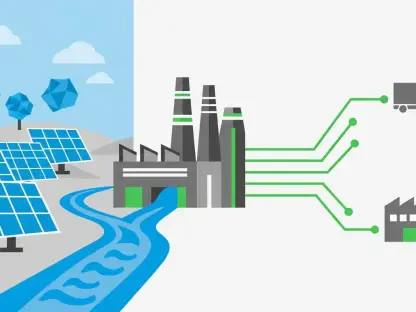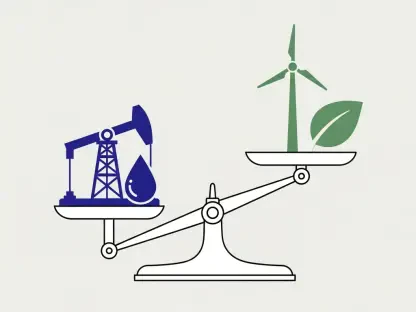In a world grappling with the dual challenges of energy security and environmental sustainability, the International Energy Agency (IEA) has dropped a bombshell with its latest World Energy Outlook report, projecting a steady rise in global oil demand through 2050, a sharp pivot from earlier predictions of a potential peak by 2030. This forecast emerges under a new framework dubbed the Current Policy Scenario (CPS), which bases its projections on existing government policies rather than aspirational climate goals. What makes this report particularly striking is its apparent alignment with political pressures, notably from the Trump administration, which has long criticized the IEA for leaning too heavily toward green energy narratives. At the same time, the report delivers a chilling warning: sticking to current policies could lead to a devastating 2.9-degree Celsius temperature increase by 2100, nearly doubling the critical 1.5-degree threshold scientists urge to avoid catastrophic climate impacts. This tension between oil reliance and climate risk sets the stage for a critical global conversation.
Shifting Energy Narratives Under Political Pressure
The IEA’s latest outlook seems to reflect a significant recalibration, influenced heavily by political forces, particularly from the Trump administration. U.S. officials, including Energy Secretary Chris Wright, have openly challenged the agency’s prior focus on renewable energy, dismissing the idea of peak oil demand as unfounded. Under the CPS, oil demand is expected to climb to 113 million barrels per day by 2050, marking a 13% increase from 2024 levels. This projection prioritizes a view of fossil fuels as an enduring backbone of the global economy, aligning with a policy stance that favors oil and gas development over rapid shifts to cleaner alternatives. Such a perspective raises concerns about whether energy forecasts are being shaped more by political agendas than by objective analysis of market and technological trends.
Beyond the numbers, this shift underscores a broader struggle between immediate energy needs and the imperative for sustainable progress. The Trump administration’s withdrawal from the Paris Climate Accord and rollback of environmental regulations in the U.S. have already created ripples globally, slowing momentum on climate action. By adopting a framework like the CPS, which emphasizes current policies over transformative goals, the IEA risks amplifying a narrative that delays urgent decarbonization efforts. This political influence on energy projections could have lasting implications, potentially emboldening other nations to prioritize short-term economic gains over long-term environmental stability at a time when decisive action is critical.
Climate Consequences of a Fossil Fuel Focus
The climate implications of the IEA’s CPS are profoundly troubling, painting a grim picture of what lies ahead if global policies remain unchanged. The report projects a temperature rise of 2.9 degrees Celsius above pre-industrial levels by 2100, far exceeding the 1.5-degree limit that scientists identify as essential to prevent the worst effects of climate change, such as intensified natural disasters and irreversible ecosystem damage. This forecast serves as a stark reminder that the world’s current trajectory is misaligned with the urgent need to curb greenhouse gas emissions. It highlights a dangerous disconnect between political will and the scientific consensus on the pace required for a meaningful energy transition.
Economic realities further complicate this alarming outlook, as the costs of inaction on climate change are poised to dwarf the investments needed for cleaner technologies. While global spending on renewables and low-carbon solutions is projected to reach $2.2 trillion this year, the IEA suggests that even this level of investment falls short under the CPS. The financial burden of mitigating climate impacts—through disaster recovery, infrastructure adaptation, and resource scarcity—could place unprecedented strain on economies worldwide. This report challenges policymakers to confront the true cost of maintaining a fossil fuel-heavy status quo, urging a reevaluation of priorities before the window for effective action narrows further.
Questioning the Foundation of Oil Demand Projections
A closer examination of the CPS reveals assumptions that many experts find overly conservative, casting doubt on the IEA’s vision of sustained oil demand growth. The report anticipates sluggish advancements in electric vehicles (EVs), battery technology, and renewable energy, projecting that EV adoption in major markets like the U.S. will stagnate at just 15% of new car sales by 2035. Such predictions appear to underestimate the rapid cost reductions and robust investments driving clean energy sectors globally. Critics argue that this outlook fails to capture the accelerating pace of technological innovation, which could disrupt traditional energy consumption patterns far sooner than the IEA anticipates.
Additionally, the CPS hinges on the expectation of continued growth in gasoline and diesel consumption, a premise that seems disconnected from economic dynamics. Sustaining such demand would likely require persistently high oil prices to justify new refining infrastructure, yet those same prices could tip the scales in favor of EVs and alternative fuels, undermining the forecast. This contradiction suggests that the IEA’s “realistic” approach may not fully account for how market forces and consumer behavior could reshape the energy landscape. As clean energy solutions become more accessible, the assumptions underpinning this bullish oil outlook appear increasingly tenuous, prompting calls for a more dynamic assessment of future trends.
Global Challenges and the Path Forward
Geopolitical tensions and policy setbacks have undeniably hindered the global energy transition, creating a challenging backdrop for the IEA’s projections. Events like the energy price shocks following Russia’s invasion of Ukraine have shifted international focus toward securing reliable fuel supplies, often at the expense of climate commitments. Coupled with significant policy reversals in key nations, such as the U.S. exit from global climate agreements, these developments have fostered an environment where short-term energy security overshadows the push for sustainability. The IEA’s report, in this context, mirrors a world grappling with competing priorities, where immediate needs frequently eclipse long-term environmental goals.
Looking ahead, the economic case for decarbonization remains compelling despite these obstacles, and the IEA’s findings must serve as a catalyst for renewed global dialogue. As discussions loom at forums like the COP30 climate summit in Brazil, the urgency to align policies with climate targets cannot be overstated. Nations must consider ramping up investments in low-carbon technologies and crafting frameworks that incentivize rapid adoption of cleaner energy sources. Reflecting on the stark warnings issued in this report, it’s clear that collaborative action was the missing piece in past efforts, and bridging the gap between political realities and scientific imperatives has become the defining challenge for future energy strategies.









